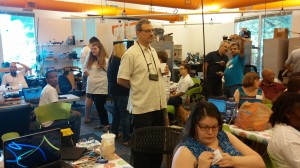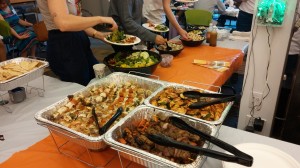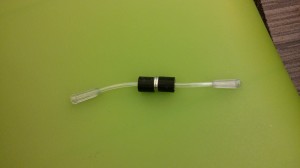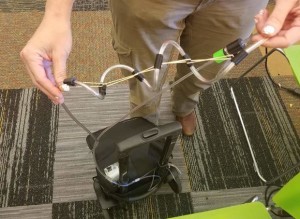Tikkum Olam Makers: an assistive technology make-a-thon
Near the end of July, I took part in a very special maker event. For three days Nova Labs devoted itself to creating assistive technology solutions for individuals with disabilities, under the guidance of Tikkum Olam Makers (TOM). Tikkun Olam is Hebrew for “repairing the world”, and TOM’s approach to this is to bring together makers, an individual with a unique challenge (the need-knower), and experts in related fields such as medicine.
I was part of a three-person team, with Nick Sipes and Sarah Pickford. We had some options as far as which project to work on. The project I put on high on my list, and was assigned to, involved creating solutions for individuals who need oxygen yet are still mobile. Delivering oxygen involves a fair number of long tubes, ultimately running into the user’s nose, and it is easy for the tubes to get tangled and stuck if one moves around. By nature, most TOM projects are very individual and meant for situations where the need-knower may be the only one in the world with a particular problem. But for this, it seemed there might be more general applications.
For preparation there were courses offered for TOM participants. I took advantage of this to learn OnShape, a fantastic free online CAD program that was apparently built by the same engineers who made SolidWorks. Bruce has been telling me for a long time that no free tool could live up to SolidWorks, but a few thousand dollars seemed rather high for what I was doing. OnShape does indeed blow away the other tools I’ve used, and for this event it was particularly useful to be able to collaborate with my team in creating parts and assembling them.
Makers love to feel we are working on something with a purpose, and the energy level at Nova Labs was quite high. In addition to the official teams, a large number of mentors were available to help with tools, many journalists and researchers observed and interviewed us, and an incredible array of helpful people who did everything from loaning equipment to running out to Home Depot. There was a lot of food and coffee available at all times. There were also journalists and researchers covering the event itself. There were visits from various federal departments as well. (Now that it has been a few weeks, some of the names elude me.) In short, the publicity was excellent.
Most of my days went from 9AM to 10PM. However there were many teams who worked around the clock; some of them had some incredibly challenging projects that were not really possible to finish in 3 days. Still, they got a solid start and some of them have continued working.
Our team ended up with three “products”. As requested, we published these on the TOM site, however, it has proven impossible for me to edit anything we placed there, and the Microsoft Word format was almost unusable. I’m told it’s under development. In the meantime, we decided to publish our work on Instructables for everyone’s benefit. The links are below.
This was a great deal of fun and I would enjoy doing it again. I hope that the organizers consider teaming with Instructables or a similar platform to bring the results to a wider group of users; right now that seems to be the greatest limitation.



